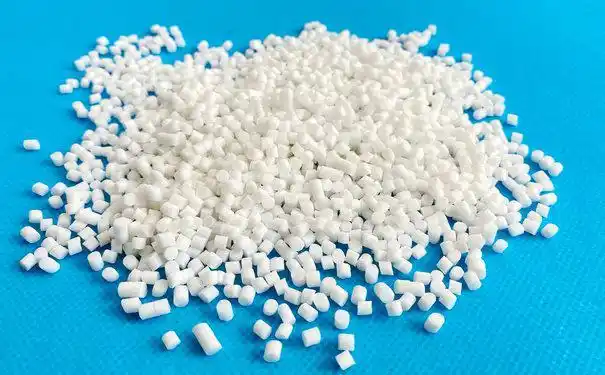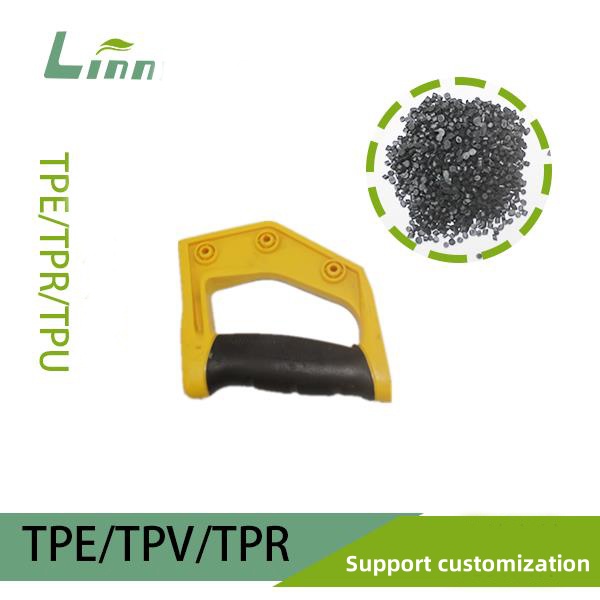In the realm of sealing solutions, choosing the right material for your sealing strips is crucial. Whether it’s for windows, doors, automotive applications, or industrial machinery, the material you select can significantly impact the performance, durability, and longevity of your seals. As someone who has been immersed in this industry for years, I’ve had the privilege of working with various sealing materials, including silicone rubber, PVC (Polyvinyl Chloride), and TPE (Thermoplastic Elastomer). Today, I’m excited to delve into the nuances of these materials and help you understand which one might be the best fit for your specific needs.

Understanding Silicone Rubber Sealing Strips
Silicone rubber is a synthetic elastomer known for its exceptional heat resistance, flexibility, and chemical stability. It’s widely used in applications where high temperatures, harsh chemicals, or extreme weather conditions are a concern. Here’s what makes silicone rubber sealing strips stand out:
Heat Resistance: Silicone rubber can withstand temperatures ranging from -60°C to +230°C (-76°F to +446°F) without losing its elasticity or sealing properties. This makes it ideal for applications in automotive engines, industrial ovens, and high-temperature machinery.
Chemical Stability: Silicone rubber is resistant to a wide range of chemicals, including oils, fuels, solvents, and acids. This property ensures that the sealing strips maintain their integrity even when exposed to harsh substances.
Flexibility and Elasticity: Silicone rubber sealing strips are highly flexible and elastic, allowing them to conform to irregular surfaces and provide a tight seal. This flexibility also makes them easy to install and replace.
UV and Ozone Resistance: Silicone rubber is resistant to UV radiation and ozone, which means it won’t degrade or crack when exposed to sunlight or ozone-rich environments. This makes it suitable for outdoor applications.
Longevity: Due to its excellent durability and resistance to environmental factors, silicone rubber sealing strips have a long lifespan, reducing the need for frequent replacements.
Understanding PVC Sealing Strips
PVC is a widely used thermoplastic material known for its cost-effectiveness, versatility, and ease of processing. PVC sealing strips are commonly found in windows, doors, and other building applications where a basic level of sealing is required. Here’s what you need to know about PVC sealing strips:
Cost-Effectiveness: PVC is one of the most affordable sealing materials available, making it a popular choice for budget-conscious projects.
Ease of Processing: PVC can be easily extruded, molded, or cut into various shapes and sizes, allowing for custom sealing solutions.
Basic Sealing Properties: PVC sealing strips provide a basic level of sealing against air, water, and dust. However, they may not offer the same level of performance as more advanced materials in extreme conditions.
Limited Temperature Range: PVC has a relatively narrow temperature range compared to silicone rubber or TPE. It can become brittle at low temperatures and may soften or deform at high temperatures.
Chemical Sensitivity: PVC is sensitive to certain chemicals, including some oils, solvents, and acids. Exposure to these substances can cause the material to degrade or lose its sealing properties.

Understanding TPE Sealing Strips
TPE is a class of copolymers or a physical mix of polymers that combine the properties of rubber and plastic. TPE sealing strips offer a balance of flexibility, durability, and cost-effectiveness, making them suitable for a wide range of applications. Here’s what makes TPE sealing strips unique:
Flexibility and Elasticity: TPE sealing strips are highly flexible and elastic, similar to silicone rubber. They can conform to irregular surfaces and provide a tight seal.
Good Temperature Range: TPE has a wider temperature range compared to PVC, typically ranging from -40°C to +100°C (-40°F to +212°F). This makes it suitable for applications in both cold and warm environments.
Chemical Resistance: TPE offers good resistance to a variety of chemicals, including some oils, fuels, and solvents. However, its resistance may vary depending on the specific TPE formulation.
Recyclability: TPE is a recyclable material, which means it’s more environmentally friendly compared to some other plastics used in sealing strips.
Cost-Effectiveness: While TPE may be slightly more expensive than PVC, it offers better performance and durability, making it a cost-effective choice in the long run.
Comparing Silicone Rubber, PVC, and TPE Sealing Strips
Now that we’ve had a closer look at each material, let’s compare them based on several key factors that are important when choosing sealing strips.
Sealing Performance:
Silicone Rubber: Offers excellent sealing performance, especially in extreme temperatures and harsh chemical environments.
PVC: Provides a basic level of sealing but may not perform as well in extreme conditions.
TPE: Offers good sealing performance across a wide range of temperatures and chemical environments.
Durability and Longevity:
Silicone Rubber: Highly durable and long-lasting, with excellent resistance to environmental factors.
PVC: May degrade or become brittle over time, especially when exposed to UV radiation or extreme temperatures.
TPE: Offers good durability and longevity, with resistance to wear and tear.
Flexibility and Elasticity:
Silicone Rubber: Highly flexible and elastic, allowing it to conform to irregular surfaces.
PVC: Flexible but may become brittle at low temperatures.
TPE: Highly flexible and elastic, similar to silicone rubber.
Temperature Range:
Silicone Rubber: Wide temperature range, suitable for extreme conditions.
PVC: Narrow temperature range, may not perform well at high or low temperatures.
TPE: Wider temperature range compared to PVC, suitable for most applications.
Chemical Resistance:
Silicone Rubber: Excellent resistance to a wide range of chemicals.
PVC: Sensitive to certain chemicals, may degrade when exposed.
TPE: Good resistance to a variety of chemicals, but varies by formulation.
Cost:
Silicone Rubber: Generally more expensive due to its superior performance and durability.
PVC: Most affordable option, suitable for budget-conscious projects.
TPE: Moderately priced, offering a balance of performance and cost-effectiveness.

Table: Comparison of Silicone Rubber, PVC, and TPE Sealing Strips
| Feature | Silicone Rubber | PVC | TPE |
|---|---|---|---|
| Sealing Performance | Excellent | Basic | Good |
| Durability and Longevity | High | Low to Moderate | Moderate to High |
| Flexibility and Elasticity | High | Moderate | High |
| Temperature Range | Wide (-60°C to +230°C) | Narrow (varies) | Moderate (-40°C to +100°C) |
| Chemical Resistance | Excellent | Sensitive | Good (varies by formulation) |
| Cost | High | Low | Moderate |
| Environmental Friendliness | Good (recyclable in some cases) | Poor (not easily recyclable) | Good (recyclable) |
| Applications | High-temperature, harsh chemical environments | Basic building applications | Wide range of applications |
Real-World Applications and Considerations
In my experience, the choice between silicone rubber, PVC, and TPE sealing strips often depends on the specific application and requirements. Here are some real-world scenarios and considerations:
Automotive Industry: For automotive applications, such as engine seals or door seals, silicone rubber is often the preferred choice due to its excellent heat resistance and chemical stability. It can withstand the high temperatures and harsh chemicals found in automotive engines.
Building and Construction: In building and construction, PVC sealing strips are commonly used for windows and doors due to their cost-effectiveness and ease of installation. However, for applications where better performance or durability is required, such as in high-rise buildings or areas with extreme weather conditions, TPE or silicone rubber may be a better choice.
Industrial Machinery: For industrial machinery, the choice of sealing material depends on the specific operating conditions. If the machinery operates at high temperatures or is exposed to harsh chemicals, silicone rubber is a reliable option. For applications where a balance of performance and cost is needed, TPE may be more suitable.
Environmental Considerations: If environmental sustainability is a concern, TPE is a great choice due to its recyclability. While silicone rubber can also be recycled in some cases, it’s not as widely recycled as TPE. PVC, on the other hand, is not easily recyclable and may have a negative impact on the environment if not disposed of properly.
Conclusion
In conclusion, choosing the right sealing strip material depends on your specific needs and requirements. Silicone rubber offers exceptional heat resistance, chemical stability, and durability, making it ideal for high-performance applications. PVC is a cost-effective option for basic sealing needs but may not perform as well in extreme conditions. TPE offers a balance of flexibility, durability, and cost-effectiveness, making it suitable for a wide range of applications.
Ultimately, the best choice for you will depend on factors such as temperature range, chemical exposure, budget, and environmental considerations. By understanding the properties and applications of each material, you can make an informed decision that ensures your sealing strips provide optimal performance and longevity.

Related Questions & Answers
Q1: Can silicone rubber sealing strips be used in outdoor applications?
A1: Yes, silicone rubber sealing strips are highly suitable for outdoor applications due to their excellent UV and ozone resistance, as well as their ability to withstand extreme temperatures and harsh weather conditions.
Q2: Are TPE sealing strips environmentally friendly?
A2: Yes, TPE sealing strips are environmentally friendly because they are recyclable. This makes them a more sustainable choice compared to some other plastics used in sealing strips.
Q3: How do I clean and maintain my sealing strips?
A3: To clean your sealing strips, use a mild soap and water solution or a non-abrasive cleaner. Avoid using harsh chemicals or solvents that could damage the material. For maintenance, regularly inspect the strips for signs of wear or damage and replace them as needed.
Q4: Can I use PVC sealing strips in high-temperature applications?
A4: PVC sealing strips are not recommended for high-temperature applications because they may soften or deform at elevated temperatures. For high-temperature applications, consider using silicone rubber or TPE sealing strips instead.
Q5: Are there any downsides to using silicone rubber sealing strips?
A5: While silicone rubber sealing strips offer excellent performance and durability, they may be more expensive compared to PVC or TPE options. Additionally, silicone rubber can be more difficult to process and may require specialized equipment or techniques for installation. However, these downsides are often outweighed by the superior performance and longevity of silicone rubber sealing strips.





